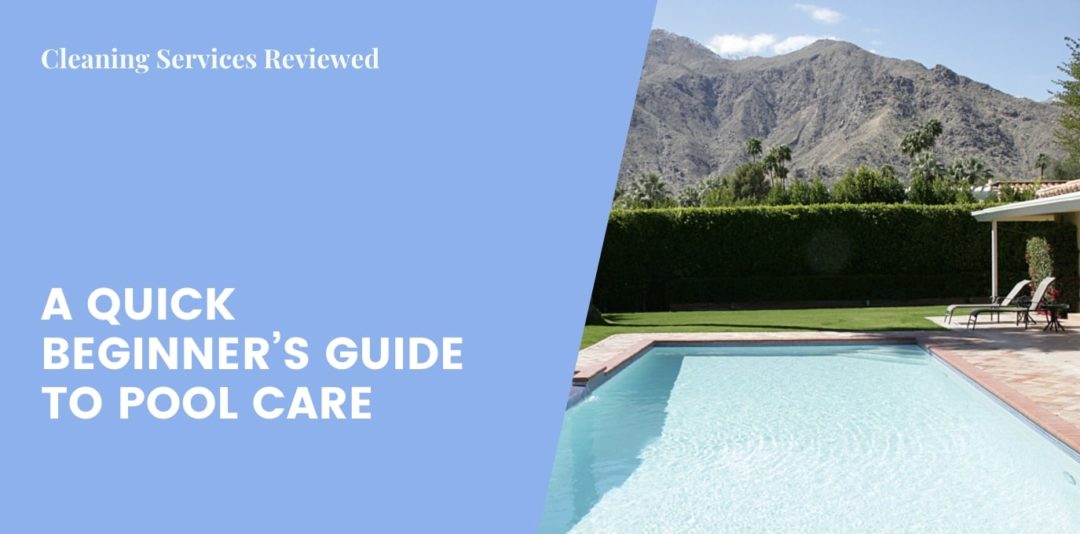Sure, it’s fun to jump and swim in the pool on a pleasant sunny day. However, maintaining the pool is altogether different—as it involves some effort and special knowledge such as the 3Cs: circulation, chemistry, and cleaning.
But in this article, we’ll delve into the basic ones which you can do. Moving forward, here’s our quick beginner’s guide to pool care!
1) Skim leaves and scrub the pool area frequently

Make it a point to remove leaves and debris floating on the pool’s surface. If you want a clean pool, this should be done every day or at least a few times in the week.
For debris underwater, you may consider investing in a robot pool vacuum. A robot pool vacuum is a specialized tool that will leave the pool floor spotless effortlessly for you.
After vacuuming, scrub out areas on the pool with algae. Not doing this will make your pool look shabby as time goes on—don’t worry, a few times a week should do it.
2) Maintain a good water circulation

When you had been a boy scout or seen country adventure movies before, you probably learned that running water was cleaner, clearer, and safer than still water.
It’s the same with swimming pools, except, of course, you can’t drink from them due to the chemical content of the water.
For clean and healthy water, you should keep the pool pump and filter working for 10 to 12 hours a day. In addition, backwash your filter frequently to take away the debris and build-up contaminants from your pool.
3) Balance your water chemicals

Contrary to popular belief, you don’t have to be as smart as Albert Einstein to balance your pool water’s chemicals. Also, it’s not difficult to do it once you know what’s needed.
But first, you have to know three simple terms before you can get the right water chemistry. These are:
- pH Level – It’s what measures the acidity and basicity of your water. The pH level is acidic on the lower end of the scale, whereas the pH level is basic toward the higher end of the scale.
Knowing this is essential because it determines whether the water will be clear or cloudy, among other things.
An extremely acidic pool can damage the lining of the pool which makes debris and particles fall out to the pool to blur it. Likewise, a pool that’s too basic or alkaline can lead to scale formation which will damage the pool equipment and also cloud the water.
So, aim for the sweet spot of 7.4 to 7.6 pH level for a crystal-clear and clean swimming pool.
- Alkalinity – This helps to balance the pH level from becoming too acidic or basic. This should ideally be 100 to 150 ppm (parts per million).
A technique for immediately making the water basic is to add baking soda to the pool.
- Sanitizer Levels – These pertain to the amount of chemicals in the water such as chlorine and bromine. The recommended levels depend on the sanitizer that you are using.
Now that you know these elements, you can create your water chemicals for the swimming pool. Before you do it, though, read the directions carefully, find out what the formula can do to the water, and consider the people who will be swimming in the pool.
4) Keep an eye on the pool’s water level

Together with the water chemistry, the pool’s water level also has to be maintained. You wouldn’t want to swim in a chest-deep pool and then lower the next time, would you?
A lot of factors play a role in changing the water level. It could be a heavy rainstorm or children doing mighty cannonballs to the pool one afternoon.
Now, the right water level for your pool should ideally be at about half of the skimmer. Pool skimmers are a type of filter where floating debris is captured, preventing them from settling at the bottom of the pool.
They are those rectangular open waterways that you can easily find in any swimming pool.
If your water level is too low or below the skimmer, fill it up using a garden hose. But, if the water level is too high, you could use a submersible pump to drain out the excess water.
Mind you, however, that it’s not advisable to use underwater pumps if your skimmer is made of fiberglass or vinyl. The reason is that the weight of the pump can damage them.



